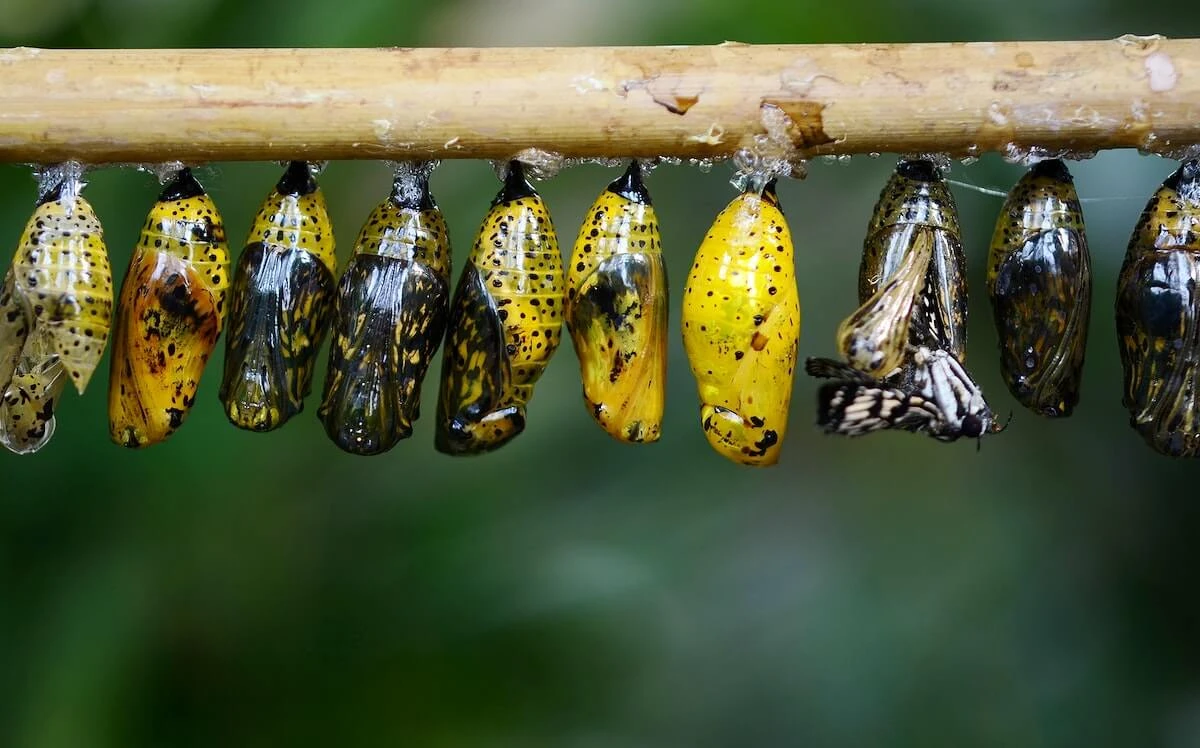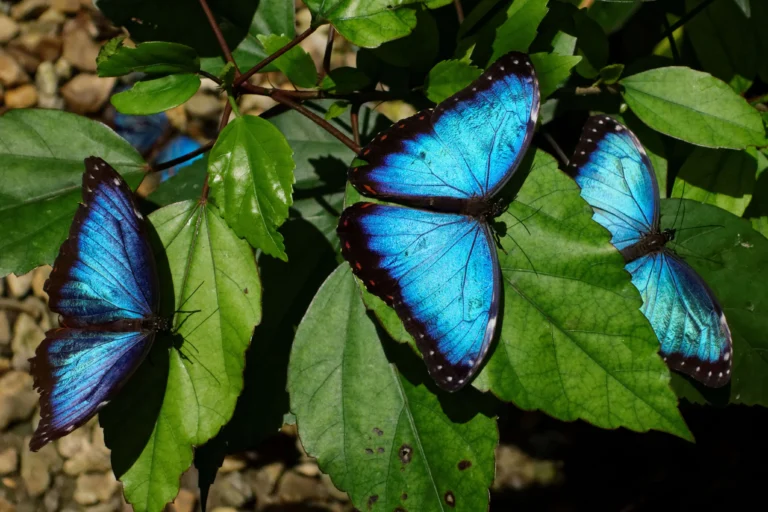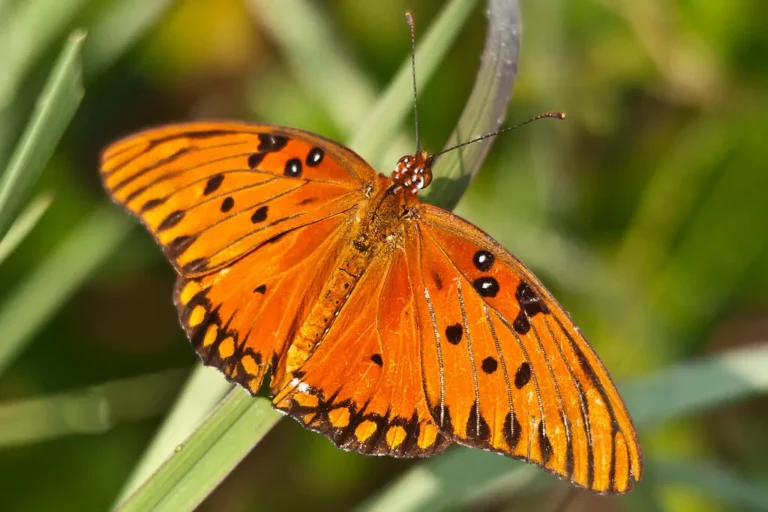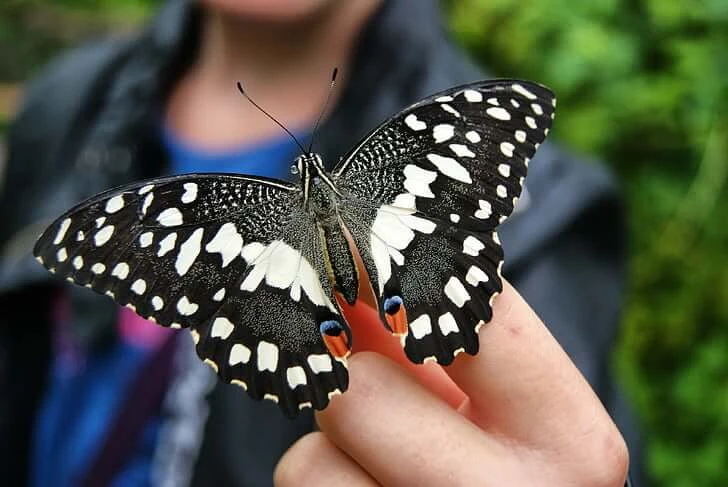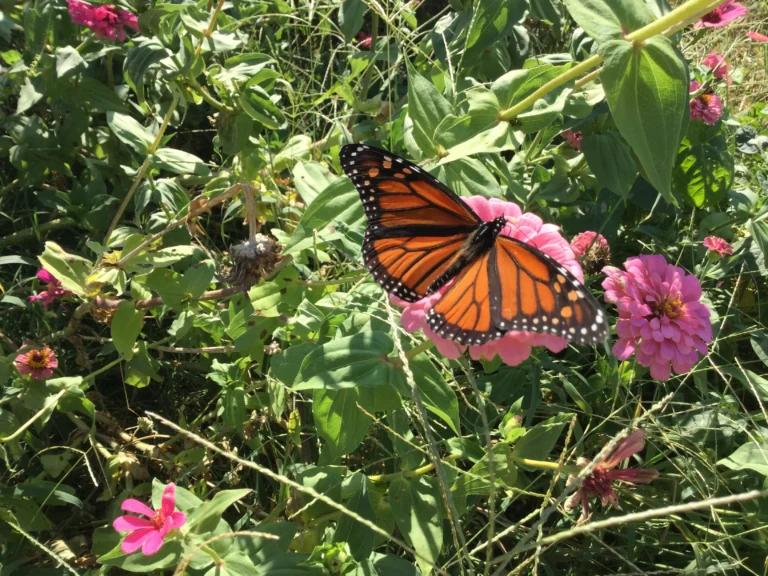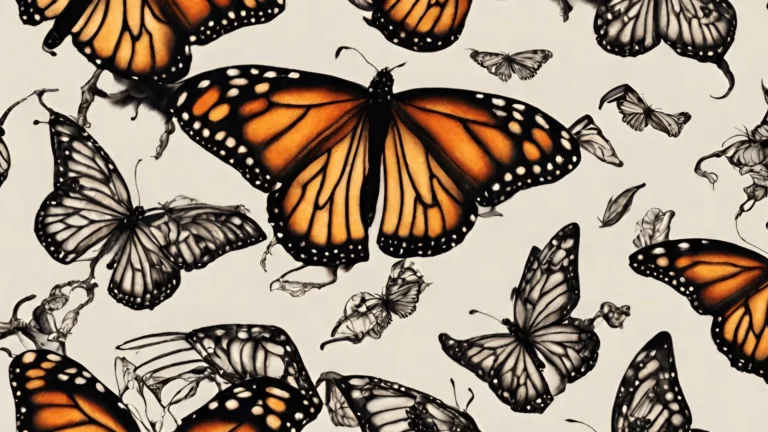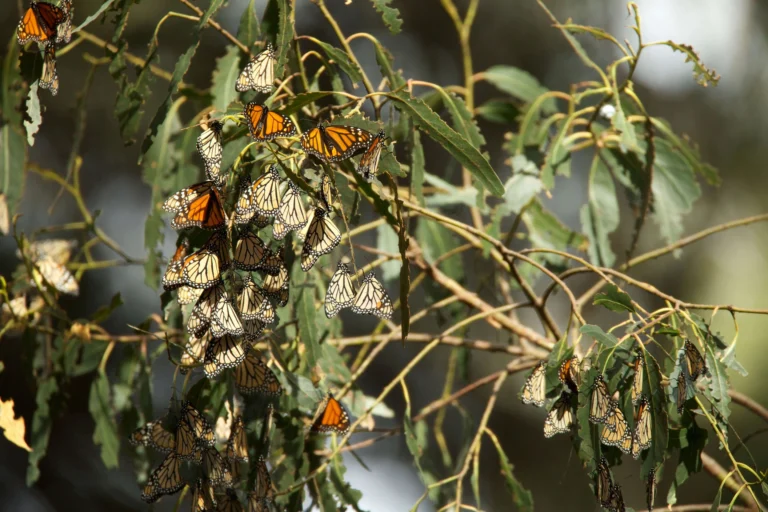Monarch Butterfly Chrysalis Stage: Your In-Depth Guide 2023
Quick Summary: The monarch butterfly chrysalis is a stage where the caterpillar turns into a butterfly. It stays in a green case and changes a lot, getting new wings and feelers. In about 10-14 days, it gets ready, showing bright colors and special patterns to show it’s grown. When it’s time, the new monarch butterfly comes out, showing off bright orange and black colors, ready to fly in gardens, help flowers grow, and start the cycle all over again.
Table of Contents
Introduction
Hey there! Are you ready to uncover the secrets of the monarch butterfly chrysalis stage? It’s a stage filled with transformation, awe, and a little bit of magic.
From the moment a monarch butterfly begins forming its chrysalis to its emergence as a stunning butterfly, each step is nothing short of a miracle.
In this friendly guide, we’ve got everything covered for you – the chrysalis formation, what goes on inside that mysterious structure, and the grand moment when a butterfly makes its first appearance.
And that’s not all! If you’re thinking of buying a chrysalis, we have tips and facts just for you. Plus, we’re tackling common problems and sharing how this stage fits into the grand scheme of nature.
So, come along on this adventure, as we explore the mesmerizing world of the monarch butterfly chrysalis stage. It’s a journey of wonder and discovery, and we can’t wait to share it with you!
Understanding the Chrysalis Stage
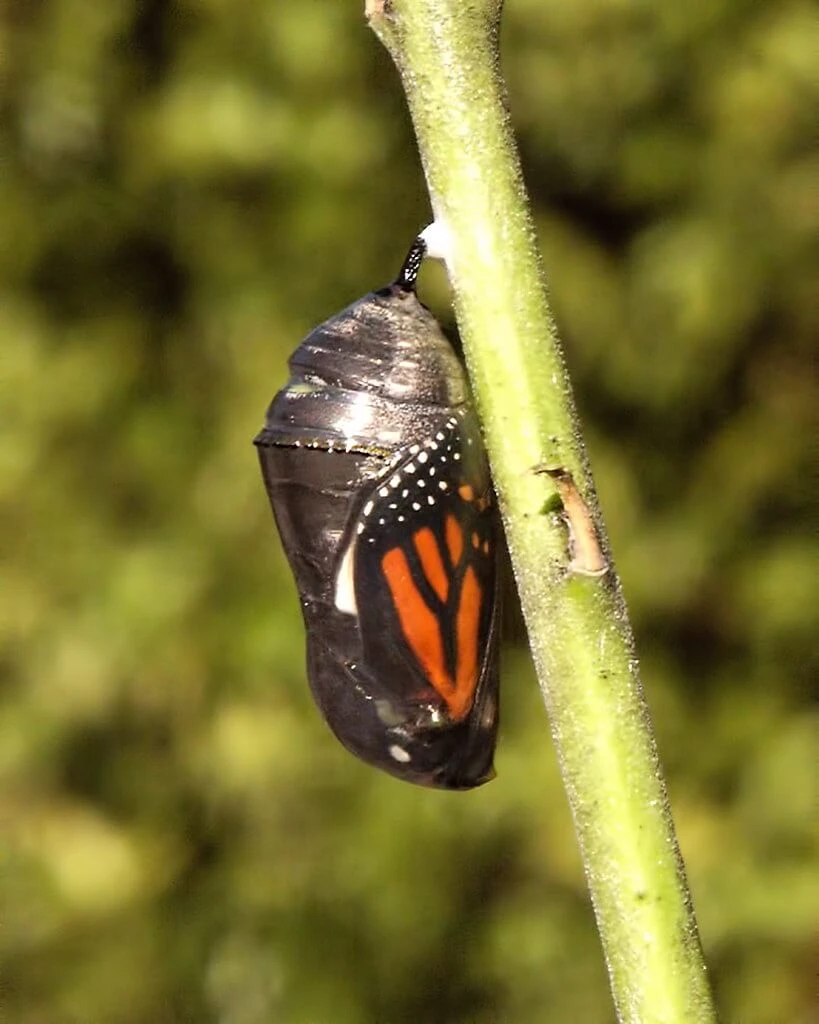
Have you ever wondered about the secret behind the beautiful transformation of the monarch butterfly? The answer lies in the mysterious chrysalis stage. Let’s unwrap the mysteries one by one!
Definition and Importance of the Chrysalis Stage of Monarch Butterfly
To put it simply, the chrysalis stage is like a magical pause in the life of a monarch butterfly. During this time, the monarch butterfly caterpillar takes a break and wraps itself in a protective shell.
Inside this cozy cocoon, it goes through amazing changes to become the beautiful butterfly we all admire.
This stage is a critical part of the butterfly lifecycle because it’s where the caterpillar transforms into a butterfly, almost like a magic show where a magician reveals a dazzling surprise at the end!
The Process of Monarch Caterpillar Forming Chrysalis
Imagine the caterpillar as a little artist, crafting its own cozy home where the magic happens. It finds a quiet spot and spins a silk pad to hang from.
Slowly, it sheds its old skin, revealing a shiny green chrysalis underneath. This is where the big change starts. The caterpillar inside starts reshaping, ready to emerge as a beautiful butterfly soon.
It’s like a little artist working on a masterpiece, don’t you think?
Duration of the Chrysalis Stage: How Long from Chrysalis to Monarch Butterfly
Now, you might be wondering, how long does this magical transformation take? Well, this fascinating process takes about 10 to 14 days.
Yes, in just two weeks, the chubby caterpillar transforms into a graceful butterfly, ready to spread its wings and embrace the world. It’s a short yet incredibly busy time, filled with changes and new beginnings!
The Formation of the Chrysalis
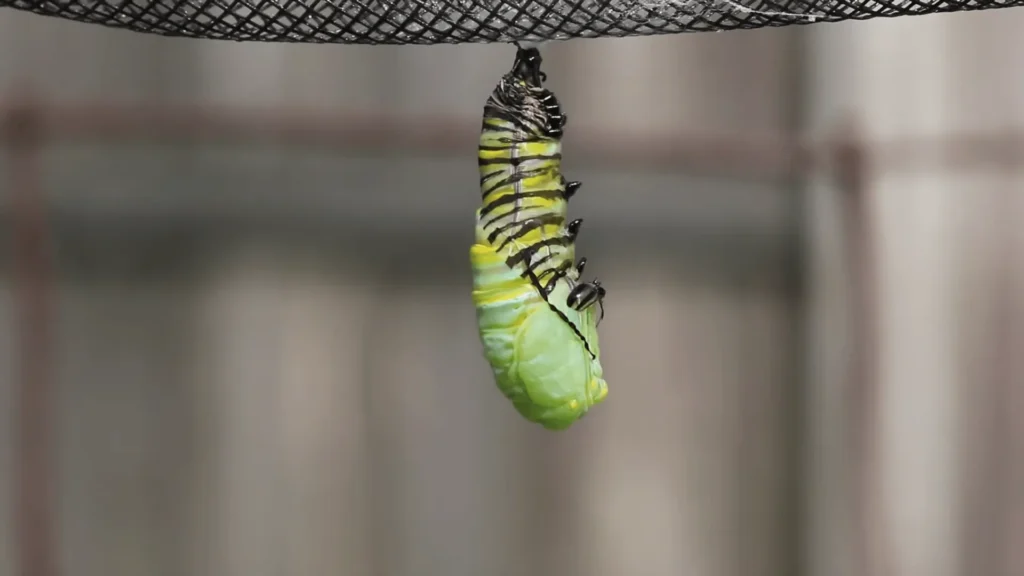
Let’s dive deeper into the amazing world of the monarch butterfly. Get ready to explore the fascinating process of chrysalis formation!
How Do Monarch Butterflies Make Their Chrysalis?
Creating a chrysalis is a fantastic act of nature. The monarch butterfly starts this process as a hungry caterpillar munching on leaves.
As it grows, it starts to feel a change coming. It stops eating and finds a quiet place to hang out. Here, it forms a ‘J’ shape and begins the process of transforming into a chrysalis.
This moment is the beginning of something truly magical.
Physical Changes: Monarch Butterfly Caterpillar to Chrysalis
During this stage, the monarch caterpillar goes through some mind-blowing changes. It’s like it’s getting a complete makeover! The caterpillar’s skin sheds, revealing a green case underneath, which is the chrysalis.
Inside this, the caterpillar slowly changes, rearranging itself in the most amazing way, getting ready to become a fluttering butterfly. It’s nature’s way of showing that change can be beautiful!
To explore more about the beauty and variations in monarch butterflies, discover the enigmatic blue monarch butterfly and its uniqueness in our guide.
The Role of Hormones in Chrysalis Formation
Now, you might be wondering, how does the caterpillar know when to change? Well, it’s all thanks to some special substances called hormones.
These hormones guide the caterpillar, helping it know when it’s time to start becoming a chrysalis and later, a beautiful butterfly.
It’s like a natural alarm clock that tells the caterpillar when it’s time to transform!
Inside the Chrysalis
Ready to peek into the secret world inside the chrysalis? Let’s take a fascinating journey to understand what happens within this green capsule during the metamorphic journey of the monarch butterfly.
Cellular Transformation During the Monarch Butterfly Chrysalis Stages
Inside the chrysalis, a wonder of nature unfolds. The caterpillar, which now looks like a green blob, is busy transforming at a cellular level. Its cells are changing and adapting, preparing to take on a new shape and function.
Imagine a puzzle where pieces find new places to create a beautiful picture – a butterfly ready to grace the world with its presence.
Nutritional Aspects: Do Monarch Butterflies Eat Their Chrysalis?
Now, here comes a fun fact! While inside the chrysalis, the monarch doesn’t eat in the way it used to as a caterpillar. It has all it needs from its earlier feasting days.
But here’s where it gets interesting – it uses parts of its old body to nourish the new one.
Learn More About the Monarch Butterfly Diet In our detailed guide.
The Role of Genes and Proteins in the Transformation from Chrysalis to Monarch Butterfly
During this amazing transformation, genes and proteins play a big role. They work like little managers, making sure everything goes smoothly.
The genes guide the building of a butterfly from the ground up, while the proteins are the workers putting everything together.
It’s teamwork at its best, leading to the birth of a beautiful monarch butterfly.
The Chrysalis Structure

In this section, we are going to talk about the mesmerizing structure of the chrysalis.
Morphological Characteristics: What Does a Monarch Butterfly Chrysalis Look Like?
The monarch butterfly chrysalis is truly a work of art. Picture this: a jade-green oval structure adorned with golden dots.
It’s like a tiny, ornate jewel that holds a precious secret inside – the emerging monarch butterfly. The green color helps it blend in with the leaves, providing a perfect hideaway.
Material and Texture: Examining the Gold Spots on a Monarch Butterfly Chrysalis
You must be curious about those shiny gold spots on the chrysalis! These aren’t just for show.
These golden dots are thought to play a part in helping the chrysalis breathe, making it a living jewel that combines beauty with functionality.
Feel free to imagine it as a magical pendant with the spark of life within it.
Defensive Mechanisms: Protecting the Monarch Butterfly from Chrysalis to Butterfly Stage
Nature is always full of surprises. Did you know the Chrysalis has its own security system? Yes, indeed! The chrysalis is not only pretty but also pretty tough. It has built-in mechanisms to keep the little butterfly-to-be safe from threats.
Its hard outer shell and camouflaged appearance are nature’s way of protecting the delicate transformation process happening inside.
Emergence from the Chrysalis
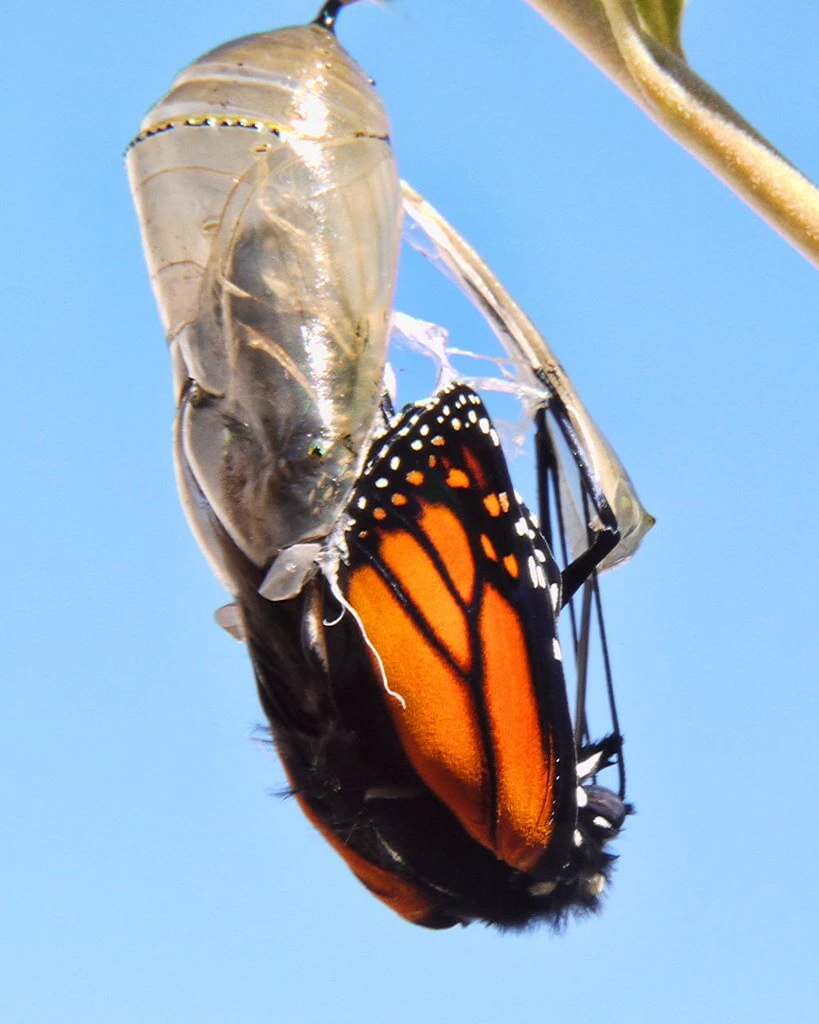
In this crucial phase, we witness the birth of a beautiful butterfly as it emerges from its chrysalis, a moment that encapsulates the magic of nature.
The Emergence Process: Capturing the Monarch Butterfly Chrysalis Time Lapse
Imagine being able to fast-forward time and witness the grand entrance of the monarch butterfly. In a span of a few weeks, what once was a caterpillar becomes a butterfly ready to grace the world with its presence.
If you ever get a chance, don’t miss out on watching a time-lapse video of this amazing process!
Initial Moments as a Butterfly: From Chrysalis to Butterfly Monarch
As the chrysalis splits open, a brand new monarch butterfly makes its first appearance. It’s a tender moment, with the butterfly slowly unfolding its wet wings.
Over the next few hours, it will rest, allowing its wings to dry and become strong enough for its first flight.
It’s a slow, yet remarkable transformation, showcasing nature’s wonderful craftsmanship.
Physical Changes and Adaptations: Monarch Butterfly Emerging from Chrysalis
The butterfly that emerges is a sight to behold, with vibrant colors and delicate wings. However, it is not just the appearance that has undergone a change.
The butterfly is now equipped with a new set of mouthparts, designed for sipping nectar, and antennas for sensing its surroundings.
It is now a fully transformed, self-sufficient, and beautiful creature, ready to start a new chapter of its life.
The Significance of the Chrysalis Stage in Nature

In this section, we will explore the vital role that the chrysalis stage plays in the grand scheme of nature.
From fitting into the ecosystem to being a crucial part of the monarch butterfly’s migration, the chrysalis stage is indeed significant.
Role in the Ecosystem
The chrysalis acts as a bridge connecting the caterpillar to the butterfly stage, an essential part of the food web. Birds and other predators often feed on them, which, although seems cruel, helps in maintaining the balance in nature.
Besides, the transformation that occurs within the chrysalis is a crucial biological process that fascinates scientists and nature enthusiasts alike.
The Importance of the Chrysalis Stage in the Monarch Butterfly’s Migration
Every year, monarch butterflies undertake a remarkable migration journey, traveling thousands of miles.
The chrysalis stage plays a vital role in this, providing a protective space where the caterpillar can transform into a butterfly, equipped with all the necessary features for a long flight.
This migration not only showcases the miracle of life but also the impeccable design of nature.
Predators and Defenses
Despite its vulnerability, the chrysalis has certain defenses to protect itself from predators. Its green color serves as a camouflage, helping it blend with the surroundings.
Moreover, if the chrysalis senses danger, it can exhibit slight movements as a deterrent.
Learning about the various predators, including birds and insects, and understanding the defense mechanisms can be a fascinating study.
Additionally, understanding the different appearances, like that of a yellow monarch butterfly, can provide deeper insights into the complex world of monarch butterflies.
A Buyer’s Guide to Chrysalis
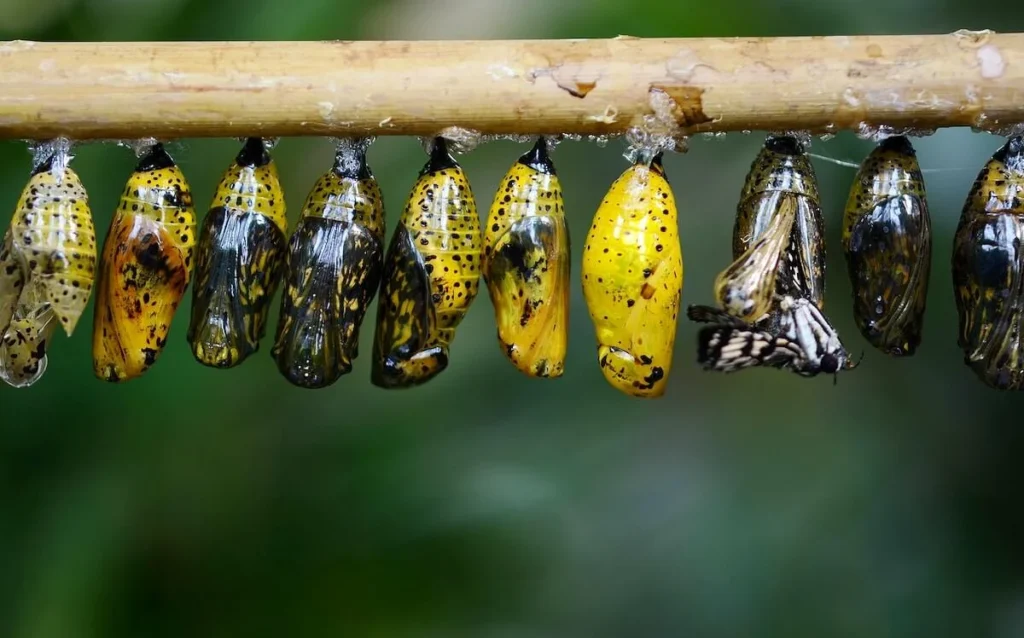
In this section, we provide a comprehensive guide for enthusiasts looking to buy a monarch butterfly chrysalis. From finding the right source to understanding how to care for your purchase, we’ve got you covered.
Where to Find The Monarch Butterfly
Getting your hands on a monarch butterfly chrysalis is not as difficult as it might seem. Various online platforms and local butterfly farms offer chrysalises for sale.
Before making a purchase, be sure to research the seller’s reputation and the legality of Chrysalis trading in your region to make an informed and responsible choice.
An Informed Purchase: Monarch Butterfly Chrysalis Facts
Knowledge is power when it comes to buying a chrysalis. It is vital to learn about the chrysalis stage, the proper care required, and the expected time for the butterfly to emerge.
Moreover, understanding the signs of a healthy chrysalis can aid in making a successful purchase.
How to Care for Your Purchase: Monarch Butterfly Chrysalis Care
Caring for a chrysalis is a rewarding experience that requires attentiveness and a nurturing approach.
Provide a safe and stable environment to hang the chrysalis, protect it from predators, and maintain the right temperature and humidity levels to facilitate a healthy metamorphosis.
Remember, it’s not just about witnessing a beautiful transformation, but also about aiding in the conservation of the monarch butterfly species.
Addressing Common Problems

Now Let’s explore the hurdles one might face during the chrysalis stage. We’ll discuss how to identify common problems and where to seek help if you find yourself in a pinch.
Identifying & Solving Monarch Butterfly Chrysalis Common Problems
During the chrysalis stage, several problems might occur, hampering the healthy development of a monarch butterfly. Here are a few common ones:
- Chrysalis Falling: Sometimes, the chrysalis might fall from its hanging place. This can be due to external disturbances or weak silk pads. If this happens, you can gently rehang it using a piece of thread.
- Parasitic Infections: Chrysalises can sometimes be targeted by parasites like tachinid flies. Keeping an eye on the chrysalis and removing any visible parasites can be a preventive measure.
- Dehydration: If the chrysalis appears shrunken or wrinkled, it might be experiencing dehydration. Maintaining a suitable humid environment can help prevent this.
- Parasitism: Parasites like wasps might lay eggs inside the caterpillars. Regular monitoring and protection of the chrysalis’ environment can help prevent parasitism.
- Irregular shapes or deformities: Ensuring that the chrysalis stage passes in a stress-free, stable environment with the right temperature and humidity levels can prevent deformities.
Troubleshooting Issues Like Monarch Butterfly Chrysalis Turns Black
Spotting a black chrysalis can be a concerning sight. This can indicate a bacterial or fungal infection or even a natural darkening as the butterfly gets ready to emerge.
Observing closely and seeking expert advice can help you understand the exact issue.
Community Support: Forums and Resources for Assistance
Fortunately, you’re not alone in navigating these challenges. Online forums and communities of butterfly enthusiasts are great platforms for sharing experiences and finding advice.
Connecting with others can offer you different perspectives and solutions to try.
Conclusion

We have traveled through the awe-inspiring journey of the monarch butterfly, from its humble beginnings in the chrysalis to its grand emergence as a vibrant butterfly.
This voyage has not only showcased the intricate details of nature but also emphasized the importance of each stage in the life cycle of a monarch butterfly.
Recap
In this wonderful journey, we’ve seen how the chrysalis stage takes a pivotal role in the monarch butterfly’s life cycle.
Typically, this stage lasts for about 10 to 14 days, a period of transformation and growth, leading to the birth of a beautiful monarch butterfly.
Chrysalis Stage Role in the Broader Life Cycle of the Monarch Butterfly
The chrysalis stage is not just a transformation; it is a testament to the marvels of nature.
The monarch butterfly, in its lifetime, undergoes a phenomenal metamorphosis, symbolizing change, growth, and rebirth, a natural phenomenon that continues to fascinate enthusiasts and researchers alike.
As we reach the end of this journey, let’s take a moment to reflect on our role in preserving the natural habitats of these beautiful creatures.
By supporting conservation efforts and being mindful of our environmental impact, we can contribute to the survival and prosperity of monarch butterflies.
Whether it is by planting a butterfly garden, buying chrysalises responsibly, or simply spreading awareness, every effort counts.
Let’s stand together in safeguarding the monarch butterflies, the jewels of nature.


